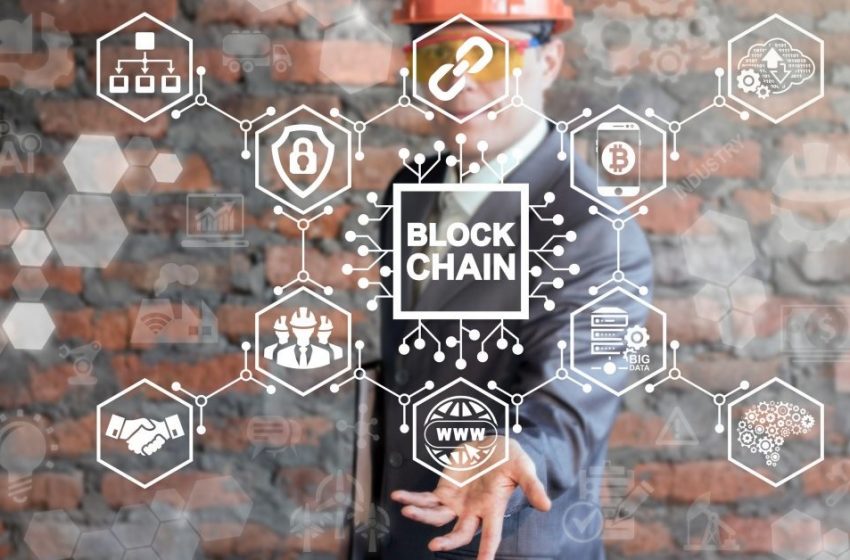The Impact Of Blockchain Technology On The Construction Industry

How Blockchains Can Enhance Construction
The construction industry is subject to many regulations for obvious reasons. Construction workers are responsible for building structures that meet rigorous demands. For example, buildings must be structurally sound, feature safe building materials, and resist natural burning.
Furthermore, these structures must feature proper fire door widths, escape signage, and more. The building must feature basic amenities such as electrical power sockets, thermostats, and energy-efficient utilities. There are many different “boxes to tick” in the building phase.
With the sheer number of responsibilities placed on construction workers, the government has imposed regulations of certification for companies/ individuals. Even so, there is still uncertainty that proper work has been completed/ verified. However, Blockchain technology may be the answer. The new technology is promising and can help turn the construction industry in a more positive direction.
What Are Blockchains and How Do They Impact Construction
Blockchains are known as decentralized databases. These decentralized databases chronologically record transactions in a secure manner.
There are various types of transactions, one of the most familiar involving Bitcoin. This is an example of value exchange. There are four primary uses of Blockchains currently developed. These include…
- Value Exchange (service, product, approval with Smart Contract)
- Smart Contacts
- Use of Smart Contacts for DAO (Decentralized Autonomous Organization)
- Confirming/ Verifying Proof of Existence for Important Data (Digital Information)
It is essential to familiarize myself with each of these Blockchain uses because they are relevant to the construction industry. Each blockchain use can be applied to construction in the following terms.
Smart Contacts
Smart contacts are known as computer programs that use if/ then principal. For example, if a builder builds a home then he requests it be inspected… If the inspector approves it, then he gets paid. This type of system uses smart contacts to record a specific scenario.
This information is then recorded on the Blockchain. This scenario is secure due to cryptography within Blockchains that store within blocks of data. These blocks are replicated on multiple servers around the globe.
Another example uses the delivery of products, which allows clients to purchase directly from the manufacture/ supplier. Smart contacts offer more trust for transactions. Stages of payment for a particular good can be stored on the Blockchain servers. This would provide greater security for direct payment- therefore cutting out the middleman.
DAO (Decentralized Autonomous Organization)
Smart contacts can create a DAO. DAOs are based on encoded computer program rules. DAOs utilizes a group of intelligent communications.
A building can be constructed as a DAO from the start and continue through the process and thereafter. Using both Building Maintenance Systems and Blockchains can allow DAOs to place orders for various goods.
For example, the DAO can place an order for light fittings, accept liability/ delivery, hire install personnel, and pay all parties involved. Payment would come from DAO’s bank account. The use of this could expand to rent payments, insurance payments, corporate fees, and more. All of these features would be managed by DAO for a building.
Using this process in relation to construction is effective. More human input will be needed to confirm requirements as well as make decisions. Requirements/ decisions would use the if/ then method stated above. Smart contacts will communicate between the client and members of the team (sub-contractor and main contractor). The goal is to design, approve, monitor, install, and tender with smart contacts.
Verifying Identity (Certification)
Digital ID enables individuals to share correlating information. This is validated by an authorized body. The identities of individuals/ vendors can be securely noted within Blockchain. This would be used to build consistent reputations for contracts longterm.
This system enables unfamiliar parties to conduct business safely. There are many practical uses of this in construction, such as police clearance for work at schools and airports. This also includes government contracts.
Overall Conclusion
In order to successfully impact the construction industry with Blockchain technology, Building Information Modeling is critical. Contractual relationships are also essential for this new strategy of the business. All those involved in a construction project would be able to assemble and discuss.
This facility the project and helps to generate a successful outcome. The construction industry doesn’t have to be filled with road flares; Blockchain technology provides an effective and practical solution.